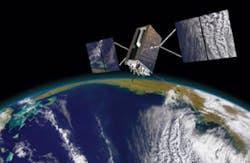Lockheed Martin Powers on the GPS III Pathfinder
“Turning initial power on for the GNST is a major milestone for the GPS III team demonstrating we are well on track to deliver the first satellite for launch in 2014,” said LtCol Don Frew, the U.S. Air Force’s GPS III program manager.
The GPS III team has installed harnesses, power subsystem components, tracking, telemetry and control hardware on the GNST structure to support phased checkout of the integrated design. Flight software versions have also been delivered for all of the spacecraft and payload computer processors. In parallel, GPS III teammate ITT is integrating the GNST Navigation Payload at their facility in Clifton, NJ.
Successfully powering on the GNST demonstrates initial mechanical integration, validates the GNST’s interfaces and leads the way for electrical and integrated hardware-software testing. The GNST will be shipped to Lockheed Martin’s GPS III Processing Facility in Denver late this year to demonstrate Assembly, Integration and Test procedures. It will then be delivered to Cape Canaveral Air Force Station in the summer for 2012 for pathfinding activities at the launch site.
Building on lessons learned from previous GPS space programs; the U.S. Air Force’s GPS III acquisition approach is considered by many to be the model for future space acquisition.

